Robotics in kindergarten: why, how much does it cost and how
How and why robotics is being introduced into pre-school education? What robots do 5-6 year old children? What techniques and designers use? And how it happens in kindergarten, where robotics has become one of the central topics of the educational and educational process.
And in your kindergarten already introduced to robotics?
In kindergarten has yet introduced only a child!
(from Facebook)
Why do you need robotics in kindergarten
The reasons for increasingly active entry of robotics in pre-school education are related to its capabilities (teachers would have been told by "didactic capabilities") and solved with its help:
- development of shallow motility by working with small details of the designers;
- mathematics and account skills: Even at the level of selection of parts for the robot, it is necessary to deal with beams of different lengths, comparing parts in size and score within 10-15;
- first programming experience;
- design skills, acquaintance with the basics of mechanics and propaedeutics of engineering education;
- teamwork: Robot usually make two or threesome;
- presentation Skills: When the project is completed, you need to tell about it.
Each of these tasks itself is not unique in itself, and it is easy to find a dozen lessons, it decisive, but robotics will be surprisingly in themselves. And all this is done:
- in a game form;
- with a child-friendly educational materials (LEGO designers or similar).
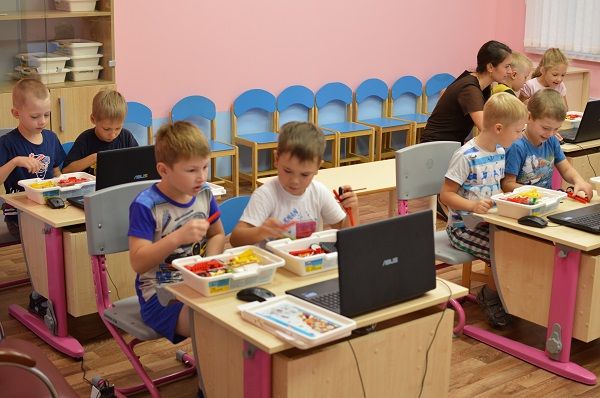
Occupation of robotics in kindergarten Lulea
Is everything beautiful
You ask why robotics did not use before, if it is so useful and unique? There are several reasons again.
First, education is the most conservative of all areas and any changes go here very slowly. Secondly, today it has become more opportunities and in terms of the choice and purchase of designers, and in terms of methods, and in terms of training. A certain role in this process is played by the emerging request from parents. Another factor - let's call it the last on the list - in some regions there are "pressure" from above, when education management bodies are recommended for kindergartens to introduce classes with robotics.
Formally, the presence of robotic designers in the educational environment Dow Perm is the requirement of the Department of Education Perm. So at different levels it is in all Gardens Perm. The question is only in the volume of implementation -
he speaks Pavel Praredel, Director. "Implementation" in practice sometimes mean the purchase of equipment and its storage in the longer room. Because "the goal will be, and there is no one to work."
In general, the process goes hard and slowly, the situation in the regions is very different. Where such classes are introduced, this is more often a paid service. In the regions, the cost of one classes is 150-300 rubles.
This is how comments the industry Antonina Citsutul, President of the Association of Enterprises of Children's Products Industry:
At the congress of pre-school education, more than half of the participants were sincerely amazed, seeing a course on robotics for preschoolers Pavel Frolova (Head of Robbo and Scratchduino - Approx. Ed.). And they grieved - and who can teach?
However, learning is actively. I sometimes robotics for teachers, representatives of pre-school education come on them more and more.
For two years, work on the designer LEGO WEDO visited teachers more than twenty kindergartens, -
he speaks Andrei Koryagin, a representative organizing such courses.
Tatiana and Lie Being
Meet it Tatyana Tsubenko. A year and a half ago she came to work as head of the usual municipal kindergarten number 28 on the outskirts of Perm.

At the same time, and I met Tatiana in Facebook, then met on. She studied competitive projects and carefully watched the defensive in JR FLL. Her projects at the contest of her guys then did not imagine. Next, everything developed rapidly. Sadik introduced programs for robotics and became a resource platform. In October, the boring garden of the garden turned into an uncomfortable name of the Lightweight. Tatiana smashed my idea of \u200b\u200bthe heads of children's gardens. Yes, and about kindergartens too. This municipal kindergarten did not only make a dream garden from himself, but also actively leads charitable activities - Tatiana itself and several educators have been conducting lessons in children's oncocenter for half a year.
Robotics (not only on LEGO, about it below) and the layering station became central in the educational and educational process of kindergarten. Robotics is included in the program of the senior and preparatory group. In the preparatory group, basic classes are held for free and necessarily for all once a month. For those who want to explore the robotics in a larger volume there are additional paid classes. For young children, classes related to the design are actively coming. Lego on them is used very active:
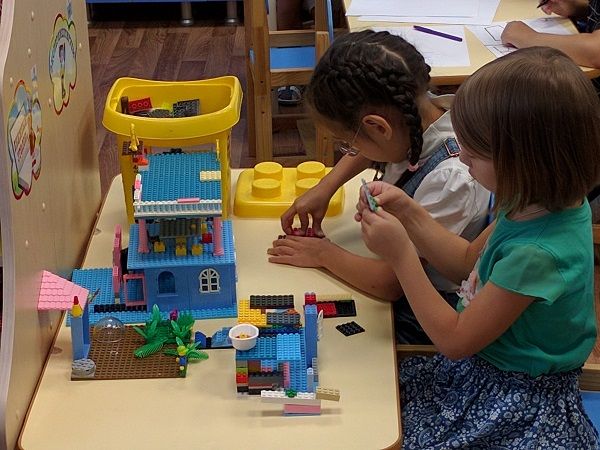
Such classes, among other things, become also peculiar preparations for the next stage.
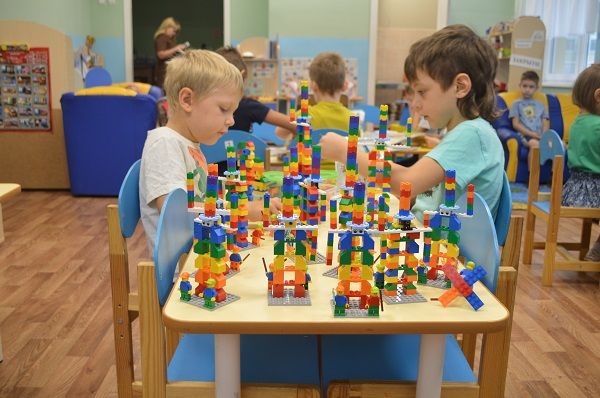
In kindergarten, many designers and other manufacturers.
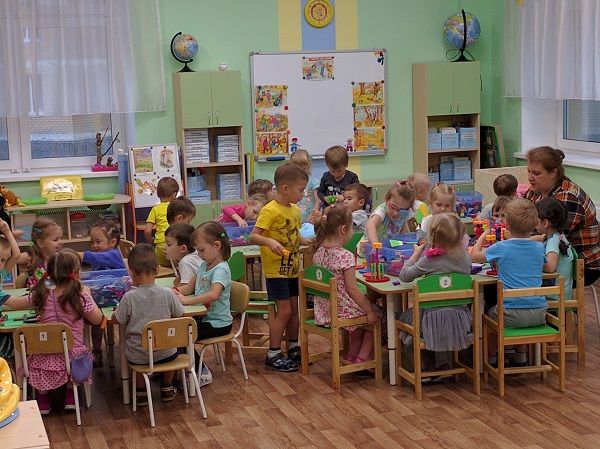
Robots in kindergarten? Is there something artificial and caused by a momentum fashionable fashion?
Reading the children's "chicken row", we see that they instead of listening to the fairy tale, begin to push the book pages with their fingers trying to enlarge the picture, -
says Tatiana. Fashion or not, but if you take into account the interests of children, and not break them, it turns out more efficiently. Otherwise, you can resent a lot that children now do not.
Designers and the price of the question
The most frequent counterproof the introduction of robotics into kindergarten and school is money. Traditionally it is believed that it is expensive pleasure and equipment, and by salary for qualified teachers. I immodestly ask Tatiana, where did the money come from? State? Sponsors? Parents? The answer is negative all the time. There are no additional funds to robotic sets, but in the general budget of the kindergarten to find money into several design constructors, it is not necessary to focus on prices and suppliers. We give a few digits. For learning a group of 10 people need 5 sets.
LEGO WEDO and LEGO WEDO 2.0
For example, take the most popular designer for preschool age LEGO WEDO.. The kit will include:
- the basic set of the original LEGO WEDO - 10 100 rubles;
- the resource set of LEGO WEDO - 4,400 rubles (not necessarily, but much increases the number and variety of collected models);
- laptop - from 18,000 rubles.
To work with LEGO WEDO, you will also need a license - individual (7,500 rubles) and network (20,600 rubles).
Total about 180 thousand rubles for the equipped robotic class. At the same time, many sellers give significant discounts. According to our estimates, it is quite possible to meet at 155,000 rubles.
Designers of other manufacturers are significantly inferior in popularity, this, for example, bobot and umkki.
So, the Russian designer Umki car4 tracker costs 15,000 rubles.
Equipment with a set of techniques and didactics for a group of 6-8 people for a kindergarten can cost from 38 to 45 thousand rubles. -
he speaks Igor Voronin, Developer of designers skirt.
For most designers, detailed instructions and methodological materials are provided. They are focused on conducting classes in a game form, through fairy tales and examples from the surrounding life.
Designers Huna-MRT Robotre in kindergarten
When Tatiana came to kindergarten, several sets of designers were already purchased here. They lay on the shelves, not even printed (yes, this is exactly how high digits of statistics on the introduction of robotics are achieved). Today they employ is one of the three branches of the Lesopolis.
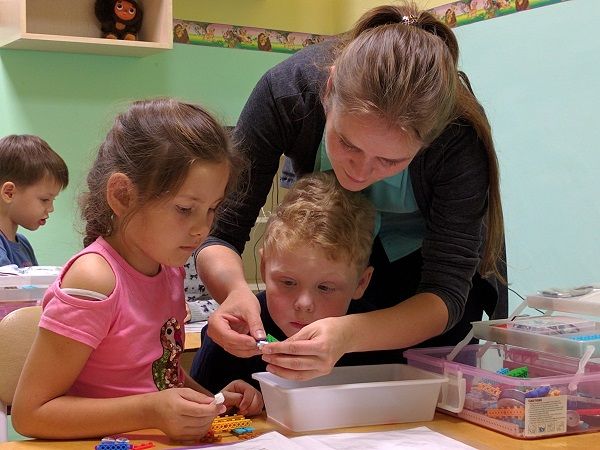
All parts of plastic designers, bright (although some criticize fuzzy colors), electronics minimum. This is a preliminary, non-programmable stage of acquaintance with robotics for children 6-8 years.

Sets teach the basics of design, simple mechanisms and connections. The robots of this level are not programmed, and this is a plus for preschool children - children receive a rapid result of their work, without spending time on the development of the algorithm, writing the program, etc. At the same time, designers include electronic elements: sensors, motors, control panel - all this allows you to study the foundations of robotics.
We visited the occupation on these constructors in the Lightweight. In a group - 6 children, one set on two students. Classes with Huna Robotk are coming as a cop - short-term educational practice, everything is held with 4 familiarization classes. These are free sessions.
Huna is easier, this is the first step in robotics, the robot is not programmed, the child connected all these motors, it can immediately play, and in Wedo you need to build programs, algorithms, -
he speaks Oksana Harina, teacher robotics Huna from kindergarten Lulea.
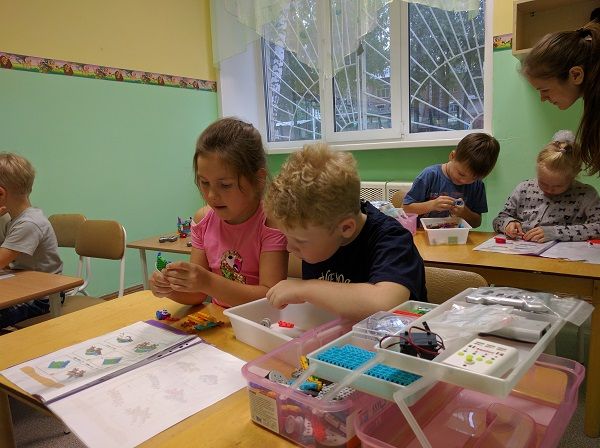
Minus the designers of the Huna-MRT robotrel - models are gathering for several classes, until you collect - do not disassemble, i.e. It is inconvenient to use in the stream and buy a large number. In addition, preschoolers need some result at once. But for a variety in the line we use them, -
says Tatyana Touvenko.
How is the lesson with lego wedo
We visited in Lieupace and occupation Galina Pretzel on lego wedo. Galina says that LEGO methodological developments are focused on children from 8 years, so for a kindergarten it is necessary to adapt them or develop themselves. For working with WEDO, a laptop is required, so the first lesson usually goes to training with a computer.
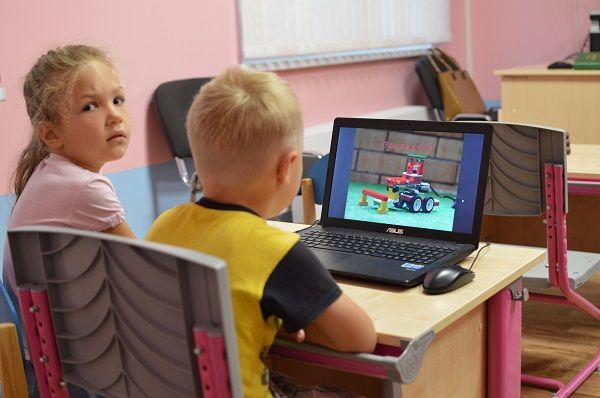
The occupation begins with the discussion of the task and possible mechanisms for its solution - various types of loaders were discussed at our lesson. Next, the roles are distributed in the command and the assembly on the instructions on the laptop screen begins.

After the robot is built, children proceed to programming. At that lesson, where we were, the algorithm was pronounced by the teacher, the program was children. It is planned that the algorithms they will be able to invent themselves. Galina says that all children are different, there are groups, where at the initial stage it turns out to immediately go to the independent development of algorithms.
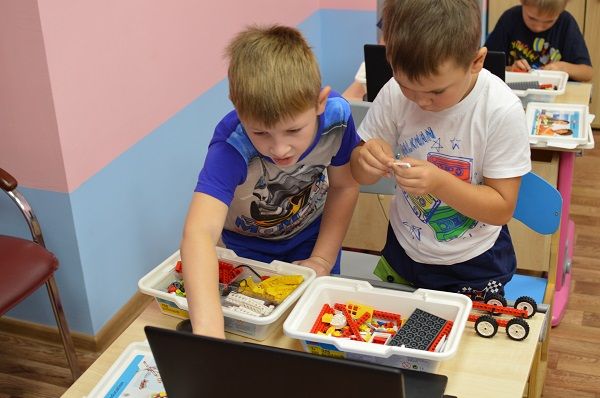
The course and emotional classes are best visible on video. The lesson was not open in the traditional plan, we asked the children's garden administration not to prepare anything specifically, but to hold the most common occupation in the "regular" mode.
And whether robotics is it?
Perhaps such a lesson would be more correct to call just design or foundations of mechanics and programming. But robotics -the word is more successful and understandable for children (and parents). It is unlikely that someone seriously believes that robotics for preschoolers has something in common with the exploitation of industrial robots. On the other hand, such classes are the first step to further teaching robotics: familiarizing with mechanics, software control, feedback and other elements.
An entertaining robotics thanks the Employees of the Children's Garden Lightweach for help in preparing the material.
Photo Initial robotics.
